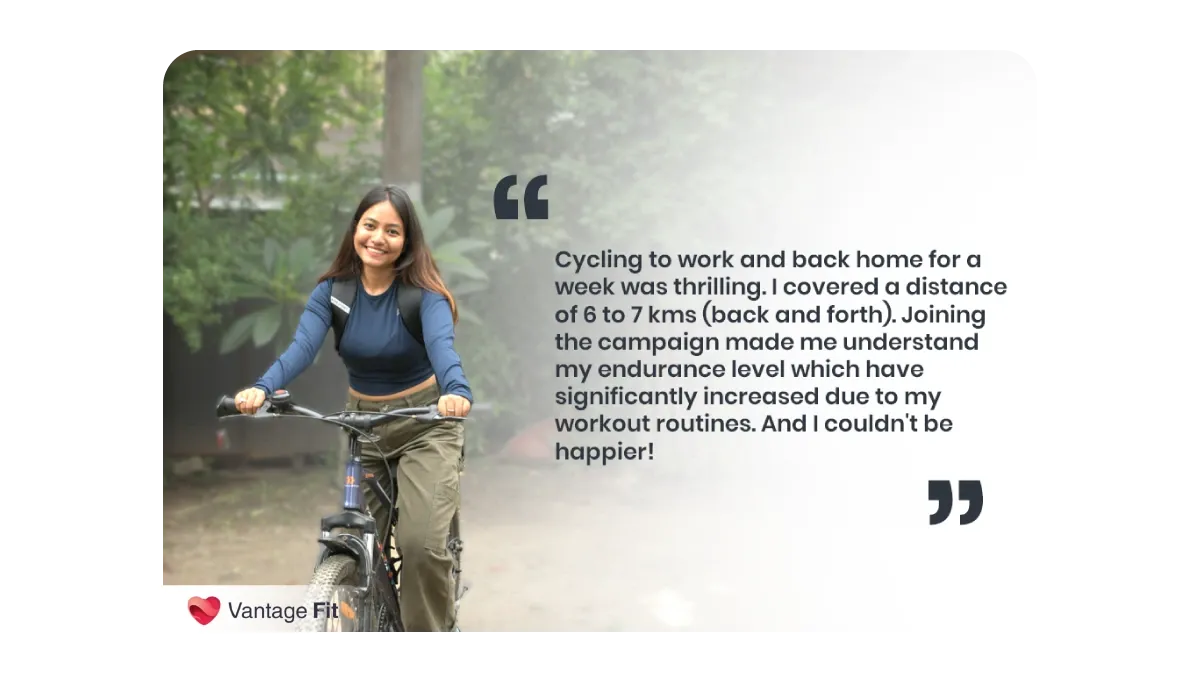How to Build an Eco-Friendly and Sustainable Workplace: Try These 12 Simple and Effective Ways
It's 2025, and the world of work has undergone a fundamental shift. "Sustainability" isn't a buzzword; it's the bedrock of successful business. Today's talent, especially millennials and Gen Z, demand more than a salary; they seek purpose.
A striking 73% of employees believe their companies should step up to confront climate change head-on. This isn't just about saving the planet—it's about building a more engaged, loyal, and productive workforce.
Imagine a workplace where your efforts genuinely make a difference – not just to the bottom line, but to the planet itself. Companies championing eco-friendly initiatives reap a dual reward: a healthier Earth and a thriving internal culture.
Beyond "good vibes," sustainability has a direct impact on your bottom line. McKinsey reports that 78% of consumers prefer eco-friendly brands, and 89% of high ESG-rated organizations outperform their peers. Companies like Bob's Red Mill and REI prove this, where strong environmental initiatives drive exceptional employee engagement.
In today's workforce, purpose drives talent. An eco-friendly office attracts top talent and conscious consumers, fostering camaraderie while benefiting the planet. Are you ready to make a difference?
Surprising Benefits of Having an Eco-Friendly Workplace
Before diving into actionable tips, let's explore why an environmentally conscious workplace is crucial for both the environment and your business success. Going green isn't just a trend; it's a strategic imperative delivering tangible benefits.
5 Key Benefits:
-
Cost Savings: Energy-efficient equipment, waste reduction, and remote work policies directly lower utility bills and operational costs, boosting your bottom line.
-
Higher Employee Engagement & Satisfaction: Modern employees, especially millennials and Gen Z, seek purpose. Aligning with sustainability goals fosters a sense of connection and satisfaction, thereby increasing commitment and retention.
-
Attracting Top Talent: A sustainability-focused culture is a powerful recruitment tool. A green workplace makes you stand out, attracting talent and prioritizing responsible, value-driven employers.
-
Enhanced Reputation for Responsibility: Prioritizing sustainability earns respect and trust from clients, customers, and the community, building a strong brand image and reinforcing long-term vision.
-
Reduced Carbon Footprint & Resource Conservation: Eco-friendly practices (energy efficiency, cycling campaigns, water conservation) directly decrease emissions and conserve vital resources for future generations.
12 Ways to Make Your Workplace Eco-friendlier (and Track Progress)
Let's build together a sustainable workplace with these12 actionable steps and practical tips for tracking progress:
1. Promote Eco-Friendly Commuting

Go beyond encouragement. Track employee commuting emissions (using simple surveys or dedicated platforms) and reward those with the lowest emissions or those who have made significant improvements. This incentivizes greener choices (biking, walking, public transit, carpooling) and raises awareness. A wellness platform can gamify this effort.
Consider implementing a system where your company keeps a record of employees' vehicle carbon emissions. You could reward those who demonstrate the lowest emissions or show significant improvement in choosing greener alternatives.
2. Upgrade to Energy-Efficient Office Equipment
Replace energy-hogging older appliances with ENERGY STAR-rated models. Turn savings into a challenge: use a wellness platform to run an office-wide "Energy Saving Challenge," tracking conservation from turning off lights, unplugging devices, or using efficient appliances. Reward participation.
3. Go Paperless and Reduce Waste
Embrace digital tools for communication, file storage, and project management. A cloud-based office boosts efficiency and saves trees. While many companies are digital, consciously eliminate paper reliance wherever possible
At Vantage Fit, we've fully embraced our digital identity. We rely on new technology to increase our efficiency and minimize paper use, demonstrating how a complete digital operation is achievable and beneficial.
4. Design your Office with Sustainability in Mind
Start small: choose sustainable furniture, add air-purifying plants, maximize natural light, use low-impact paints/materials, and install hand dryers or provide cloth towels instead of paper towels.
Get your employees involved! Encourage them to bring plants or sustainable decorations, tracking contributions via eco-challenges.
5. Implement Recycling and Composting Programs
Cultivate a strong recycling culture in your office. Set up marked bins for paper, plastic, and compostable materials. Educate your team on what can be recycled and the importance of their participation in this effort.
Bring your sustainability efforts full circle with a "Recycling Challenge." You could use an employee recognition app to monitor participation in recycling and composting. Reward your employees with "Eco-Warrior" badges for their consistent eco-friendly choices.
6. Organize a Go-Green Wellness Challenge

Wellness and sustainability naturally go hand-in-hand. Organize challenges that promote both physical health and eco-consciousness. For instance, consider setting up a step challenge or stair challenge as an alternative to using the elevator or a cycle-to-work campaign.
You can use a wellness platform to reward employees who participate in sustainability-focused wellness challenges, such as walking or cycling to work. Each step or green habit they track can earn them rewards, making sustainability both fun and motivating.
7. Switch to Eco-Friendly Cleaning Products
Many traditional cleaning products contain harmful chemicals that impact both human health and the environment. Transition to eco-friendly, biodegradable cleaning products to reduce your office's toxic load.
Highlight the importance of green cleaning by launching an office-wide campaign. Instead of harsh chemical cleaners, opt for solutions based on natural ingredients, such as vinegar, baking soda, or citrus extracts, for all-purpose cleaning. Brands like Seventh Generation, Method, or Born Good offer excellent alternatives for everything from floor cleaners and dish soap to bathroom sanitizers.
8. Support Remote Work and Flexible Schedules
Reduce commuting emissions and office energy/waste by encouraging remote work. It helps employees to work from home not only often boosts productivity but also significantly reduces the carbon footprint associated with daily commuting. Implement flexible schedules and make remote work a regular option to harness these environmental advantages.
Highlight the importance of green cleaning by launching an office-wide campaign. Instead of harsh chemical cleaners, opt for solutions based on natural ingredients, such as vinegar, baking soda, or citrus extracts, for all-purpose cleaning. Brands like Seventh Generation, Method, or Born Good offer excellent alternatives for everything from floor cleaners and dish soap to bathroom sanitizers.
9. Optimize Air Conditioning Usage
Often your office air conditioning can consume a significant amount of energy. Taking simple steps to manage your air conditioning (AC) usage can lead to substantial energy savings and a reduced environmental impact in your workplace.
Install programmable thermostats, use blinds to block heat, maintain filters, and set efficient temperature ranges. Small adjustments yield significant energy savings.
10. Declutter Your Digital Footprint
It might surprise you, but digital clutter has a significant carbon footprint. Every email sent and every file stored in data centers requires a lot of electricity to run. In fact, according to Science Focus magazine, emails alone have a global carbon footprint equivalent to that of approximately seven million cars.
Encourage your team to regular inbox/file clean-ups on a regular basis.
For example, to kickstart this initiative, host a "digital clean-up day" and share before/after screenshots.
11. Power Your Office with Green Energy
Embracing green power sources is becoming increasingly practical and accessible for organizations of all sizes. Options like rooftop solar installations and larger-scale wind energy are no longer just future concepts; they're present-day solutions.
If your organization operates in a deregulated electricity market, making the switch to greener energy can be as simple as choosing a renewable energy plan from your electricity supplier. Switch to a renewable energy supplier (wind/solar plans) if available or invest in on-site solutions like rooftop solar panels for long-term savings and impact.
12. Foster a Culture of Green Innovation
To truly embed environmental responsibility within your organization, cultivate a corporate culture where green thinking isn't just a policy but a shared asset. It's all about making green thinking a core part of your corporate culture.
This means sparking genuine communication and team spirit, involving your employees, and actively seeking their brilliant ideas on how to become even more eco-friendly.
Launch a "Green Innovation Challenge" where teams brainstorm solutions aligned with UN SDGs. Appoint passionate "Green Ambassadors" to lead departmental initiatives.
Real-World Impact: Our Journey to a Greener Workplace

At Vantage Circle (the parent company of Vantage Fit), sustainability isn't just a policy; it's how we live and work. Our annual carbon emission report isn't just data; it's proof that small, collective actions spark significant change. We're actively weaving sustainability into our culture, focusing on what matters most.
1. Driving Change with Data
Every year, we track our team's carbon emissions from commuting, office energy, and digital habits. Making these numbers visible empowers everyone to see their impact and inspires friendly competition and innovation for a cleaner tomorrow.
2. Eco-Friendly Commuting: A Culture Shift
We don't just encourage greener commutes; we incentivize them. For instance, our Vantage Fit "Cycle to Work" campaign, observed during World Bicycle Day, saw remarkable participation. Employees enthusiastically logged their sustainable travel including biking and walking and were rewarded with recognition for their efforts.
Beyond the environmental impact, many participants reported a noticeable improvement in their health and energy levels, highlighting how a simple change in commute can lead to a healthier lifestyle.
3. Powering Towards Net Zero
Vantage Circle is deeply committed to slashing its carbon footprint and achieving net zero. Our strategy actively reduces emissions and lessens our reliance on non-renewable energy.
In February 2023, we installed a 5KW solar panel, generating 539 units in its first reporting period—a significant step in our sustainable energy journey.
Our management is prioritizing direct emission reductions and actively seeking opportunities within our supply chain rather than solely depending on carbon offsetting.
Frequently Asked Questions
1. What is meant by an eco-friendly workplace?
A workplace that reduces waste, conserves energy, recycles, and promotes sustainable habits.
2. What makes a company eco-friendly?
A company that adopts sustainable practices like using renewable energy, reducing waste, supporting green commuting, and engaging employees in eco-initiatives.
3. What is the difference between green and eco-friendly?
Eco-friendly means causing minimal harm to the environment, while green is a broader term encompassing all actions that support environmental health and sustainability.
4. What are some green office design ideas?
Utilize natural light, energy-efficient lighting, indoor plants, sustainable furniture, and recycling stations to create a healthier, eco-friendly workspace. Additionally, it supports green commuting practices to enhance the environment further. Read our blog on green office design ideas to know more about cultivating a greener workplace.





